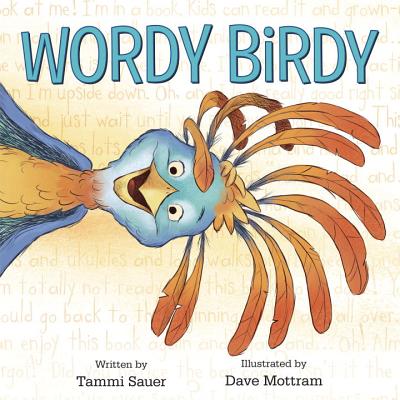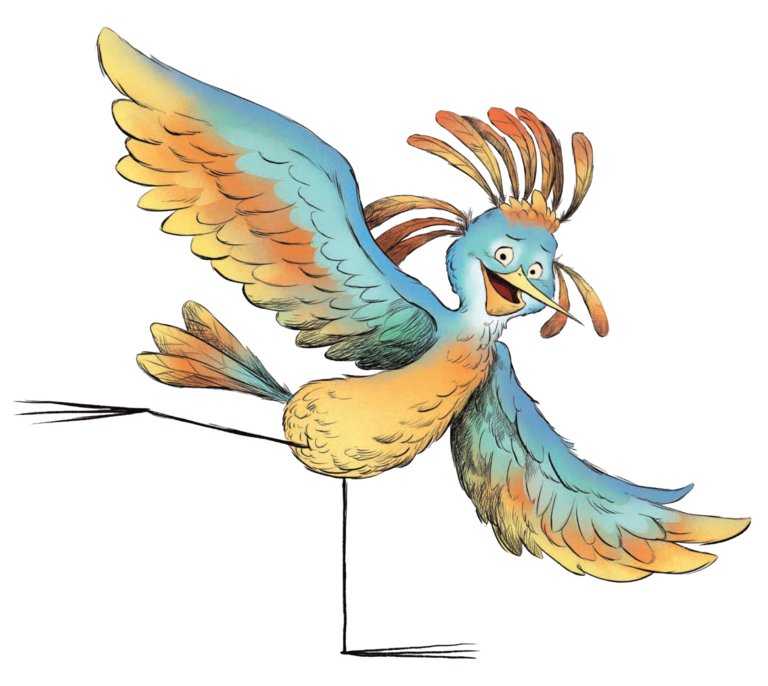analysis by Aimee Haburjak and Kristi Wright
Do a search on elements of a good picture book and you’ll quickly find a treasure trove of lists. Here’s one by agent Tracy Marchini. And another by author Margo Finke. And yet another by author Kathryn Evans. Every author, agent, and editor who works in the children’s book industry has their own overlapping set of thoughts on what elements are critical for a great picture book. As critique partners, we’ve come up with our own list(s). And no surprise, the list changes regularly depending on the latest blog post we’ve read or the most recent conference we’ve attended.
Currently, we look at
- hook
- character
- problem/plot
- twist
- climax
- resolution
- heart
- humor
- appearance

Instead of walking through definitions, we thought we’d show you our critique list in action. Here’s our analysis of Wordy Birdy, by Tammi Sauer and illustrated by Dave Mottram, about a bird who likes to talk A LOT (maybe too much) and the trouble she gets into because she’s a talker not a listener. The story is told through narration and through speech bubbles, mostly Wordy Birdy’s speech bubbles, but at times a raccoon, a squirrel, and a rabbit chime in.
Hook
WORDY BIRDY as a title already is a cute hook, but in addition, the back cover and the end papers are used effectively. Wordy Birdy, the character, speaks directly to the readers: “You are so close to the story right now! Just turn the page!” And her animal friends chime in: “She is so excited!” The end papers allow the characters to break the 4th wall and draw readers in from the get go. (At other places in the story, the animals address the narrator.) The humor of the secondary characters coupled with deep love and affection for the sweet and hilarious Wordy Birdy bring the reader in on the joke right from the start. The reader wants to know more and be in on the adventure.
Character
Wordy Birdy is relatable as an anthropomorphic character, an animal written as if she were a child. She is silly, exuberant, and relatable from a human perspective with a few nods to bird-like qualities too, mostly in the illustrations. Everyone who reads the book will think of someone they know who is a talker and not a listener. Besides, every child hears that “They need to be better listeners,” and isn’t that true for adults too?
Also, the interactions on the end papers and back cover show readers that the secondary characters genuinely like Wordy Birdy. If other characters like your character, flaws and all, readers typically will too . . . and perhaps will find a little humor in their own flaws as well.
Problem/Plot
There’s a strong story spine structure with causal, escalating tension . . . because of this, that happens; because of that, this happens. Ultimately, Wordy Birdy learns that she should at least try to listen sometimes!
Twist
Wordy Birdy’s friends get to do the fun, superhero save. Even though Wordy Birdy doesn’t listen and gets in a dangerous predicament, her friends care too much and want to save her, making them extra lovable and reinforcing the importance of the emotional arc in picture books.
Climax
Since we’re already doing a few too many spoilers, we’ll just say that her exuberance and wordiness do lead her into dramatic yet hilarious danger, just scary enough and funny enough to have children turn the pages quickly to find out what happens.
Resolution
The resolution feels natural and inevitable. There’s a slight, realistic change to her character, but she’s still sweetly flawed, like most people . . . er, birds.
Heart
The real heart in WORDY BIRDY is how loyal and understanding Wordy Birdy’s friends are. They love her despite her flaws and don’t really expect her to change. They are true friends–every child should be so lucky.
Humor

WORDY BIRDY is funny right off the bat because of the MC’s exuberance and how her friends respond to her. There is also fun humor and read aloud-ability in the repetition of the phrase “Does she listen?” And the predictability of the response “She does not.”
The story leans heavily on dramatic irony, both in illustrations and through the secondary characters being fully in on the joke around Wordy Birdy’s predicaments. For example, as she talks about how people used to think the world was flat and you could walk off the edge, she’s about to walk right off a branch. Another illustration shows her commenting on how much she “loves” white circles and triangles, but the reader and the secondary characters both know that the white circles are the eyes of the predator, waiting for her in the forest, and the triangles are that predator’s sharp teeth!
Appearance
We loved the extra attention the editor and art director paid to the endpapers, something that publishers are doing more and more often. They brilliantly utilized the space to introduce the story and give foreshadowing for both the characters and the plot. In this case, they foreshadowed friendship and the “wordy birdy-ness” of Wordy Birdy.
Favorite Parts
We adored the flawed character, Wordy Birdy, who was quite funny, especially in her actions. We admired the circular format where Wordy Birdy ends her day in a similar manner as she started her day. We loved the endpapers that gave the reader great insight into the main character and the secondary characters. And of course, we were big fans of the dramatic irony. There’s so much humor to be had in a main character being ridiculously unaware while the other characters and the readers are in on the joke.
Now that we’ve done the analysis, we can pull out strategies that might be helpful in our own work. From WORDY BIRDY, we’ll try these five things:
1. Write a flawed MC who is thoroughly loved by secondary characters
2. Use dramatic irony
3. Use a circular format
4. Think about how endpapers could be used to great effect
5. Break the 4th wall
Actions: Now it’s your turn! Use our list (or make your own!) to analyze a favorite picture book. Then try strategies the author uses in your own work.

As a trained veterinarian, Aimee Haburjakexperienced the wild world of animals from fleas to African Wild dogs to Cheetahs. Currently she resides in Northern California, where she explores the wild world of pictures books with her 4 semi-wild children, veterinarian husband and menagerie of pets. Aimee enjoys the wonder also found in the writing community and picture book courses, and is a member of SCBWI, 12 x 12 and CBI.
Kristi Wright (co-editor) writes picture books and middle grade novels. Her goal as a writer is to give children a sense of wonder, a hopefulness about humanity, and a belief in their future. She is represented by Kurestin Armada at Root Literary. She is an active volunteer for SCBWI and a 12 X 12 member. Find her at www.kristiwrightauthor.com and on Twitter @KristiWrite.

This is wonderful! Thank you for posting this. Very helpful : )